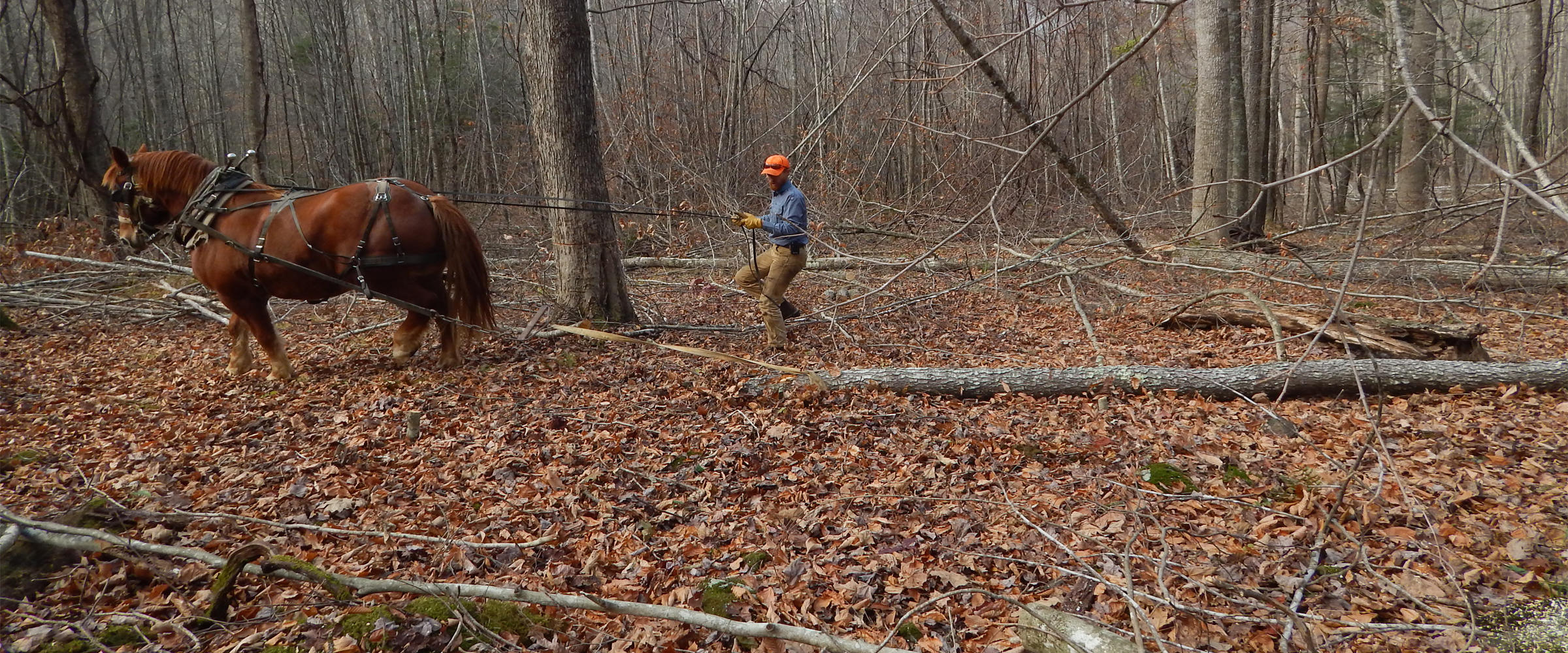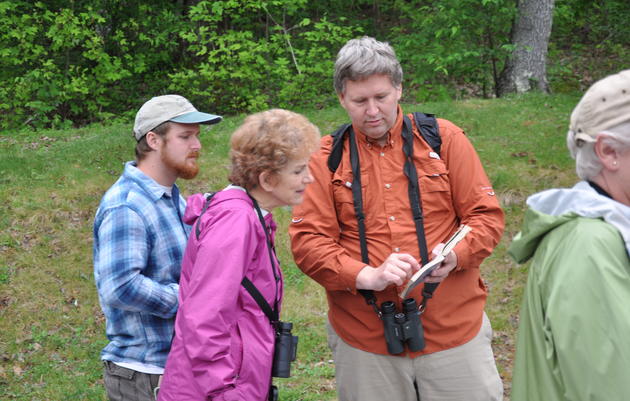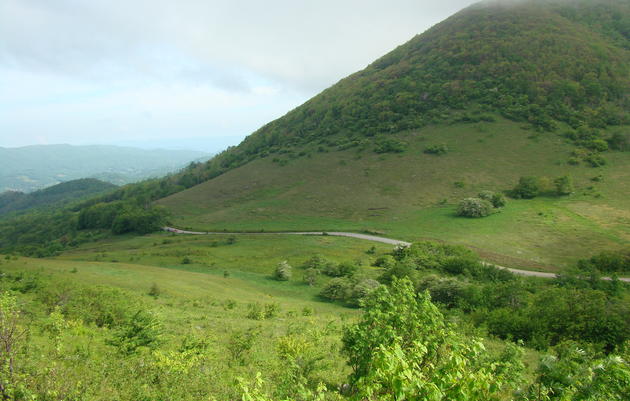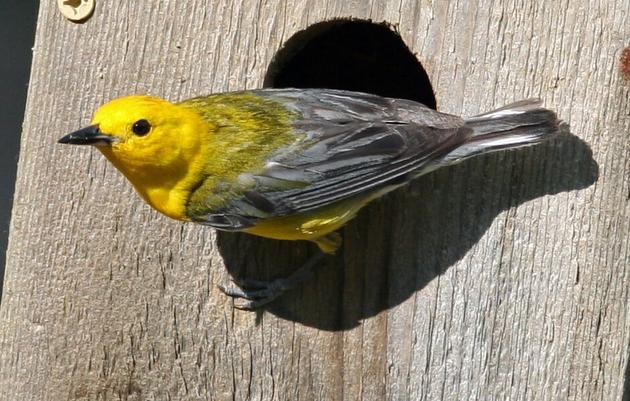Sustainable timber management is an important aspect of habitat restoration. In the case of the Golden-winged Warbler or other species that prefer a component of their habitat to be in the early stages of forest growth, the Appalachian history of logging and farming kept these young forests intact in a montage across the landscape. As technology advanced, the shifting mosaic of land use began to move more quickly with the use of machines. Trends now show movement back towards a more deliberate way of life highlighting our undeniable connection with nature and animals.
In Ashe County, Audubon NC partnered with Mountain Works Sustainable Development, Inc. to restore eight acres of early successional habitat on private lands using draft horses to remove trees. One of the strongholds for NC Golden-wings, the Amphibolite Mountains in Ashe and Watauga Counties play an important role for warblers during their breeding season.
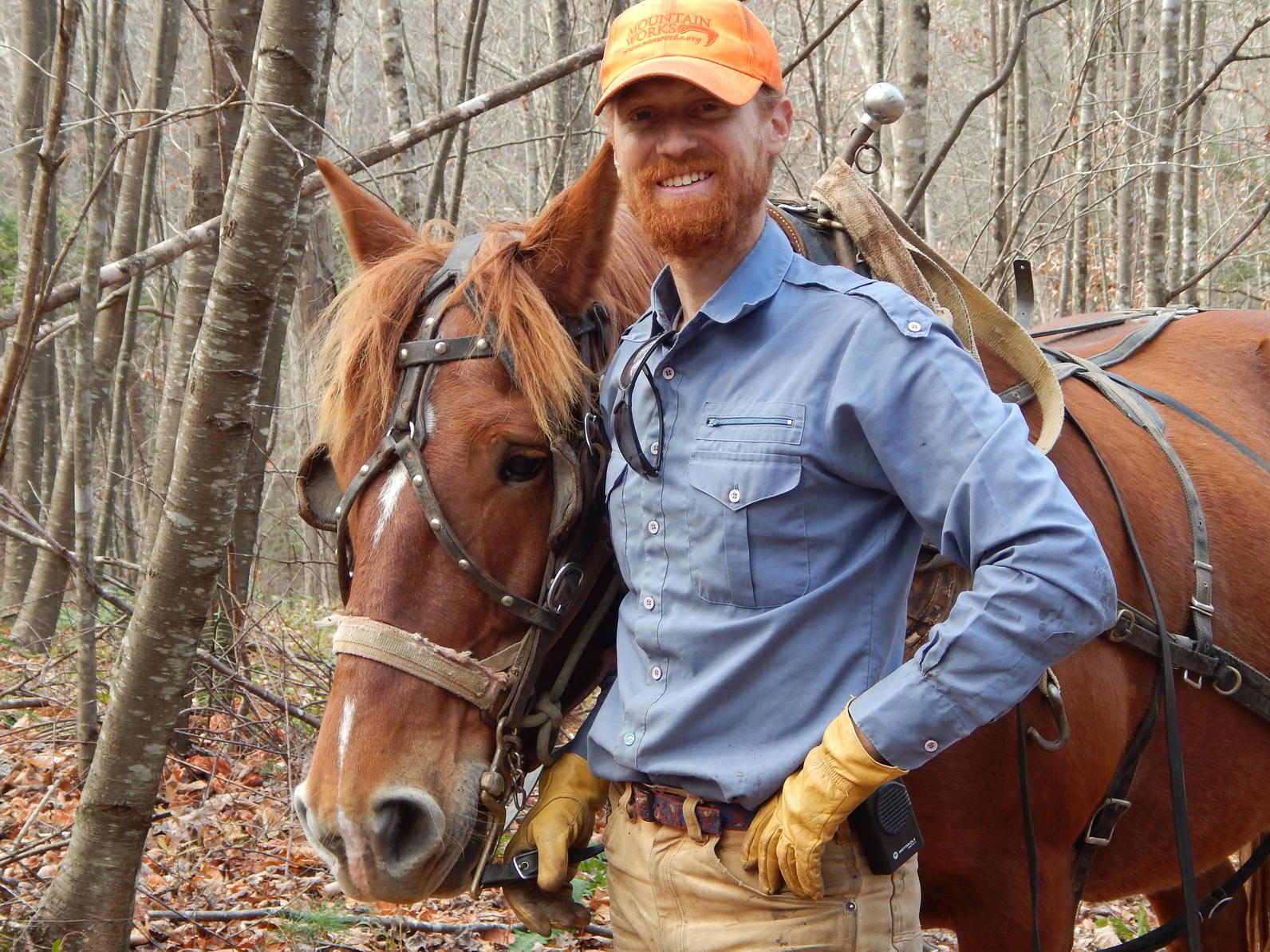
Working with animals rather than machines reduces impact to the environment and ultimately results in less soil compaction (a horse weighs about 1600 lbs.; a rubber-tired skidder weighs about 10,000 lbs.*) erosion, and emissions. Like goats controlling overgrown vegetation, logging with horses allows access to places that machines may not be able to go such as rocky ridgetops, steep slopes, or narrow passages. Horses can also provide a viable option for single-tree selection harvesting, a method that can be effectively applied to bird conservation. Habitat restoration for Golden-winged Warblers often targets the removal of smaller trees that have grown densely in an area that was historically open, a situation that lends itself to smaller logging operations. Further, companies such as Mountain Works use all extracted forest products which help make forestry a smart and responsible choice for landowners.
Ultimately what is created is a healthy relationship among people, birds, and sustainable natural resources by utilizing what may be considered the very first solar-powered implements (animals that eat grains!) Who can argue with that? This spring, we hope some birds will find a new place to make nests within this family’s forest in Ashe County.

